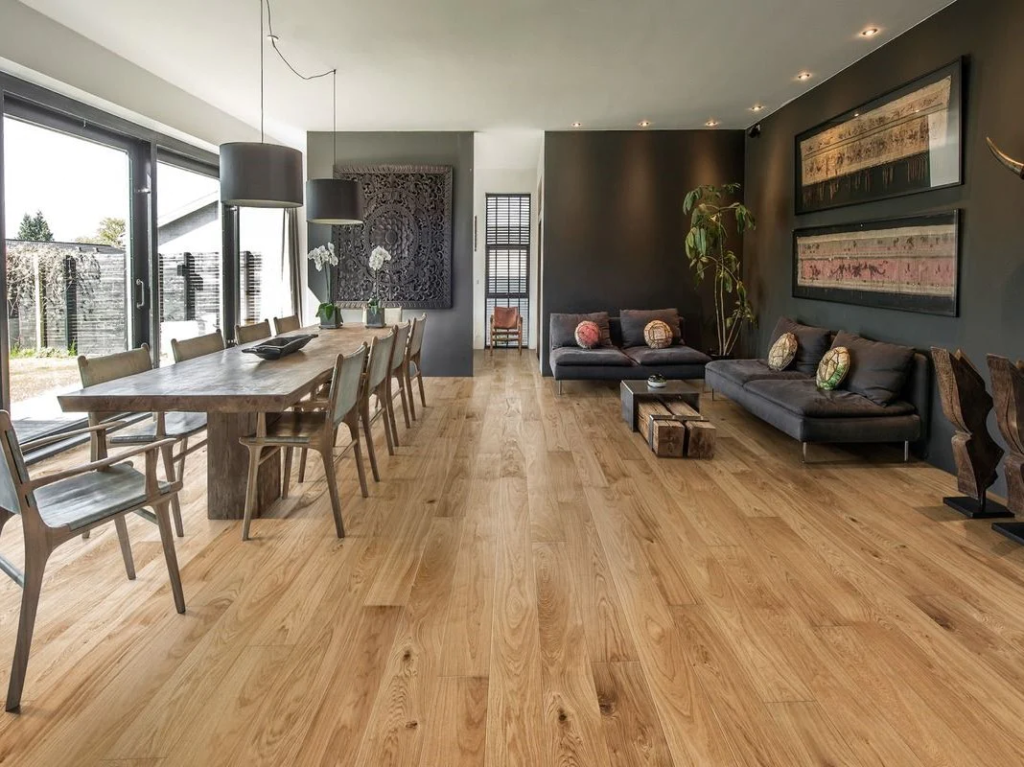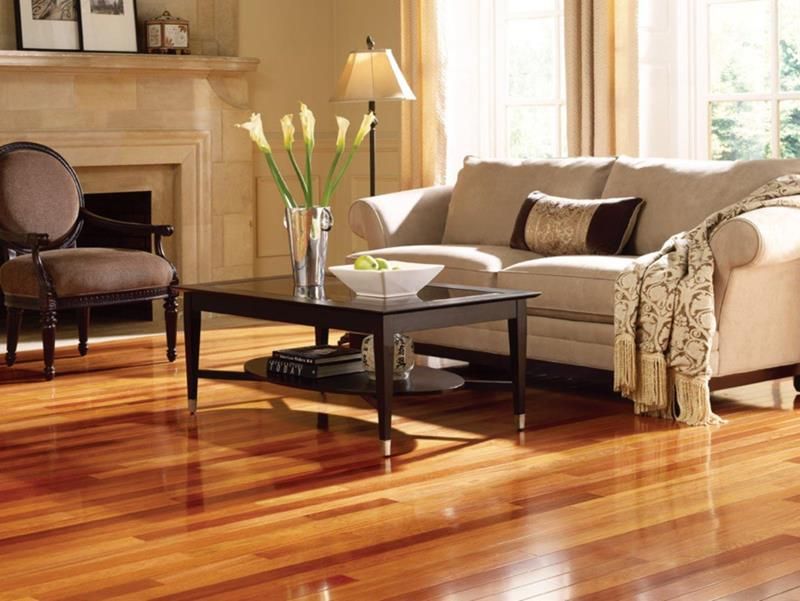
Engineered wood flooring is made up of multiple layers of material. The top layer is genuine hardwood, and faster-growing softwoods such as spruce or pine are used on the lower layers. To be genuine engineered wood flooring top layer must be real wood. That means you get all the beauty of the natural grain, but with several additional benefits when compared to solid wood, including:
- The top layer uses slow-growing, densely grained hardwood giving it greater resilience and a beautiful appearance. Because only a thin layer of hardwood is used in the composition, it ensures this valuable resource is used as efficiently as possible.
- By doing this, it’s a more eco-friendly and sustainable option too
- The moisture and temperature-resistant softwoods in the lower layers make it incredibly stable – up to 75% more stable than solid wood floors.
That top layer can be any thickness, so if you’re looking at engineered flooring as an option, it’s best to choose one that has a thicker top layer. They last longer, stay looking their best and are more resistant to damage, especially in high traffic areas such as hallways. Flooring with thicker top layers will be more expensive, but at Timberworld, we feel that the additional cost is worth it to have a better looking and longer-lasting finish.
Types of engineered wood flooring
There are a variety of different wood species available – species defines the tree it has come from for example oak or walnut. Grain pattern, colour, and tone are all different properties of different wood species and as wood is a natural material, there may be colour and pattern variances even within the same species. Here we explain the benefits and characteristics of each species in our range.
Engineered Oak Flooring
Engineered Oak floors are by far the most popular choice of wood species and come in a large range of colors. Oak is distinctive for its straight and swirling graining patterns which can have a silvery texture. Rays and knotting give that traditional and classic appearance. Over time it will grow slightly darker in direct sunlight.

Engineered Walnut Flooring
Engineered Walnut flooring is recognized as a luxurious dark timber. With its distinctive knots, attractive burrs, and unique grain patterns it can make a real design statement to any home. Walnut has both straight and irregular graining patterns that offer an exciting variation to other woods. In sunlight, it lightens over time.
Engineered Ash Flooring
Engineered Ash flooring is a beautiful, light-colored, strong, and flexible option. Best described as a pale creamy wood, Ash has a bold, straight, moderately open grain and distinctive patterns and markings. In sunlight, it darkens over time.
Engineered Beech Flooring
Engineered Beech flooring is pale with slight undertones of pink and a softly speckled surface. These light flecks within the graining add character and diversity to the flooring. Beech is great at resisting dents as it has a similar hardness to Oak but a straighter, more regular grain. In sunlight, it darkens over time.
How to clean engineered wood floors?
It’s easy to clean engineered wooden floors – you use the same technique as cleaning hardwood floors. Regular vacuuming will keep the dust at bay, while a weekly wipe with a damp mop will remove surface dirt. Remember to squeeze the excess water out of the mop, so you don’t leave puddles that could cause water damage to the surface.
Regular waxing and polishing will bring out the natural beauty of the top decorative layer. For engineered wood flooring that’s been badly stained or looks a little tired, a very light sanding will take off the surface dirt and reveal the beautiful grain underneath. Remember, though, that the decorative layer is relatively thin. Use fine-grain sandpaper and the lightest of touches to avoid damaging the surface.



